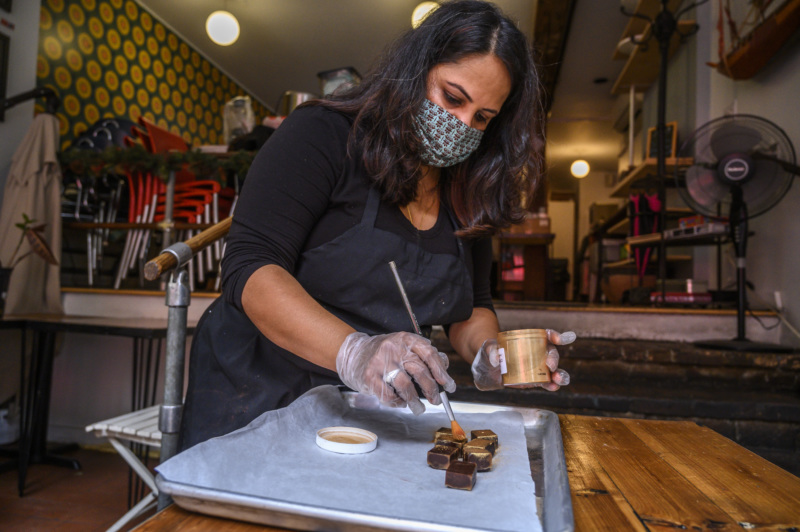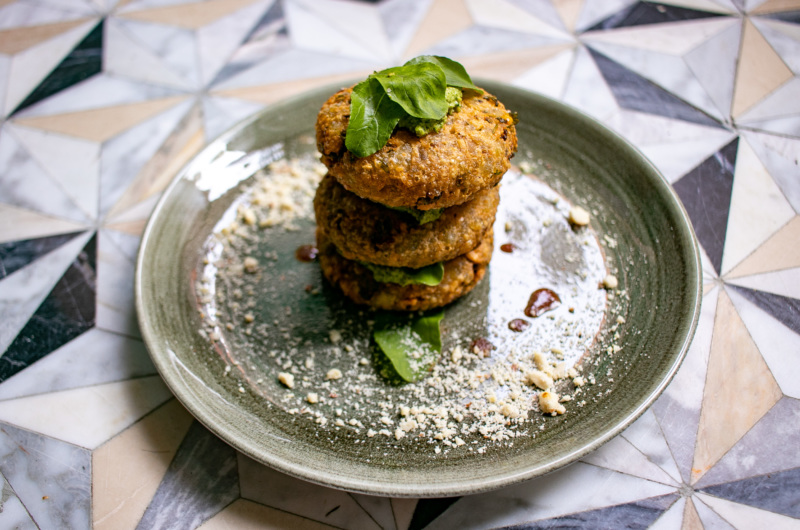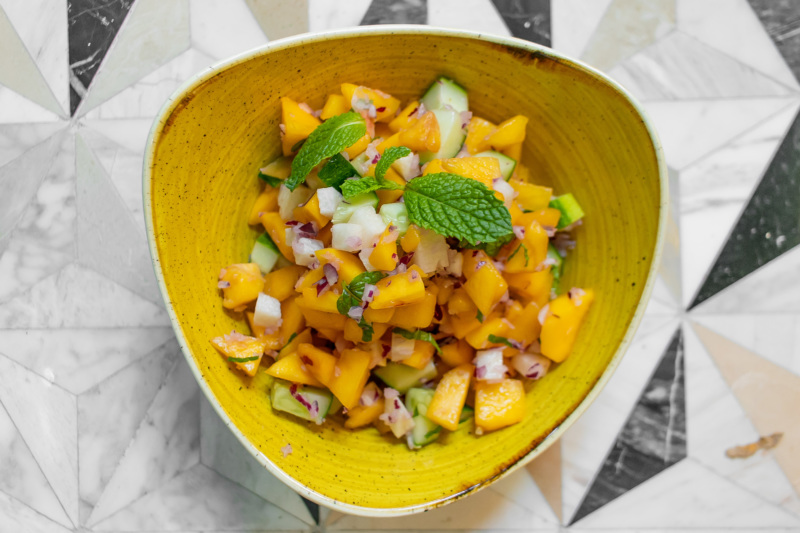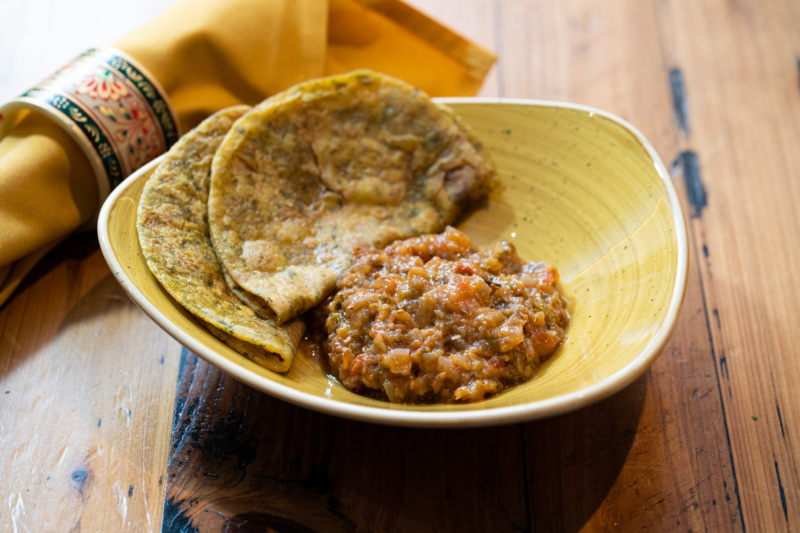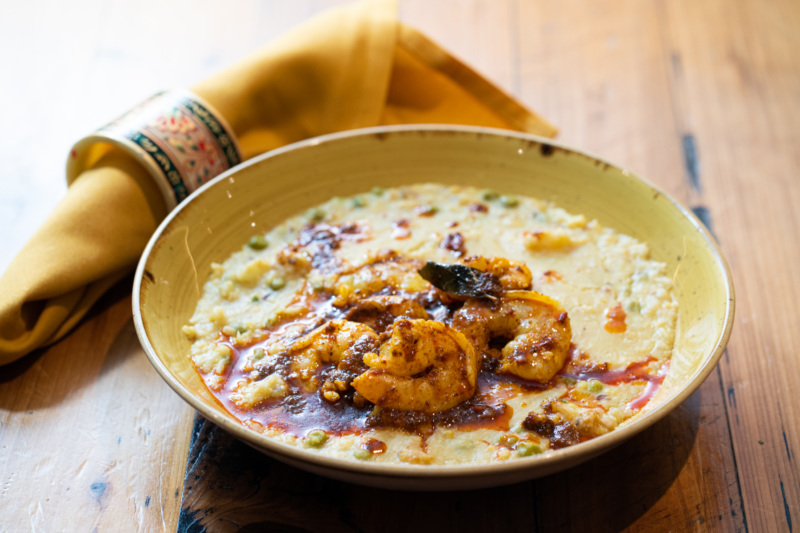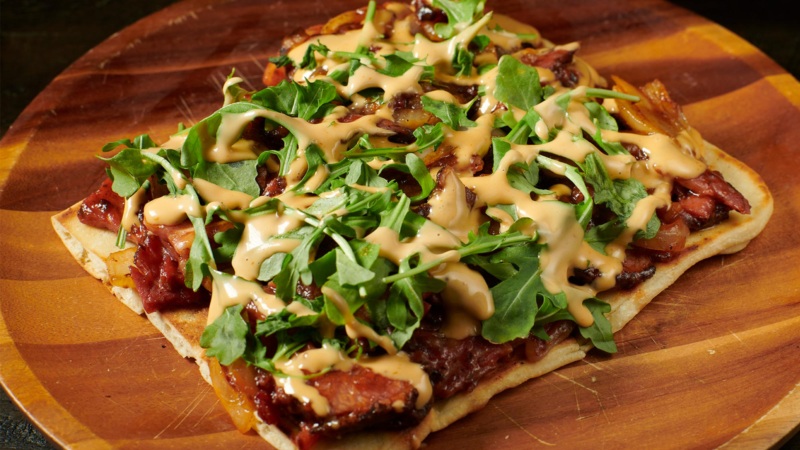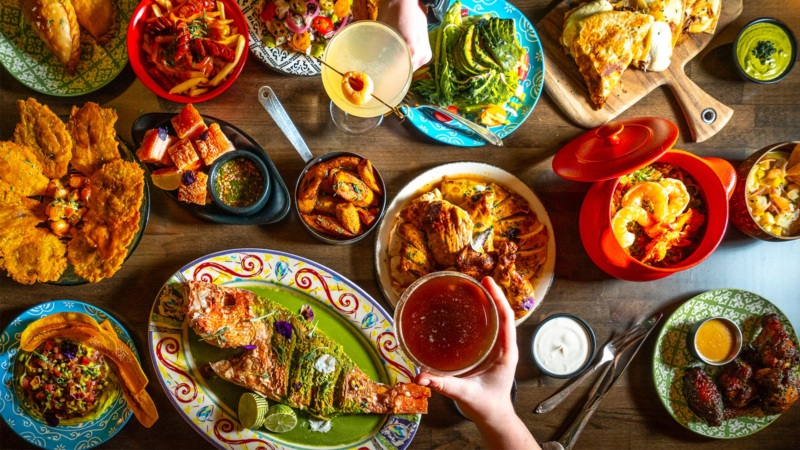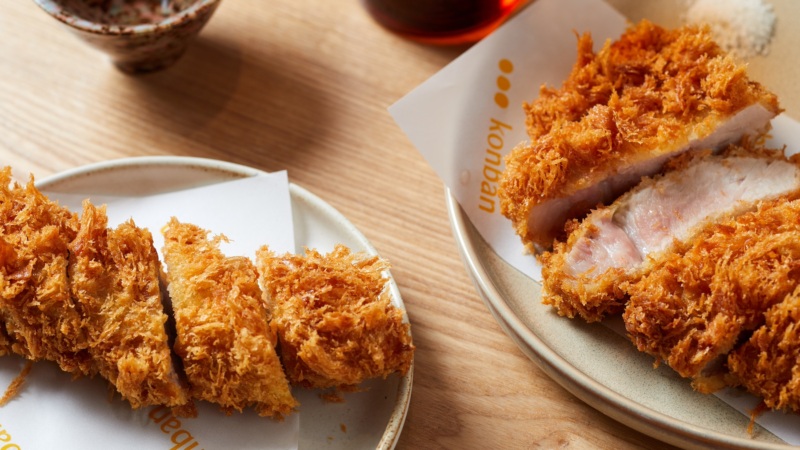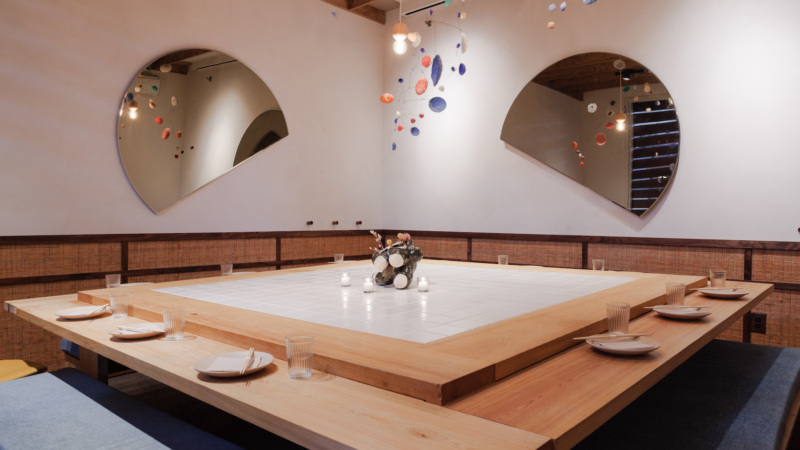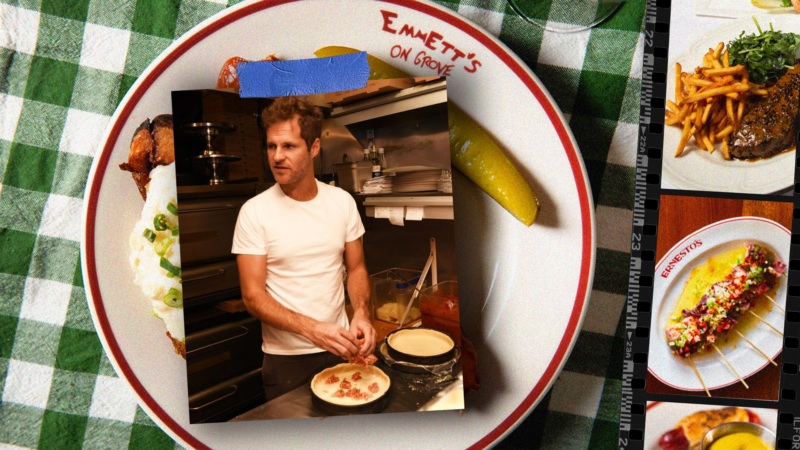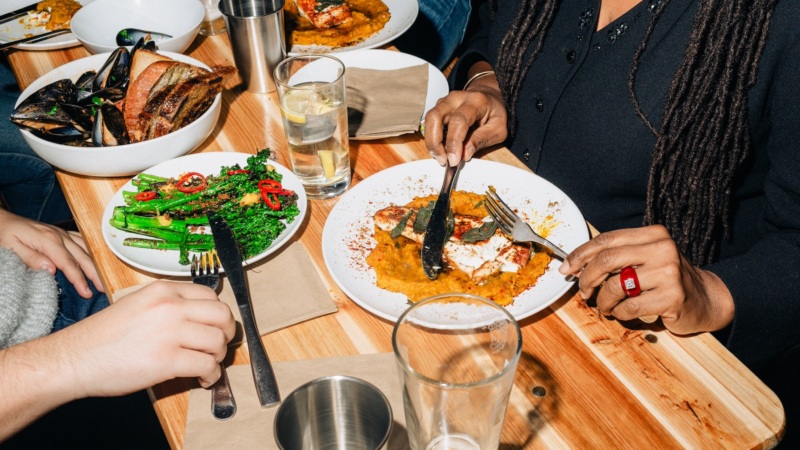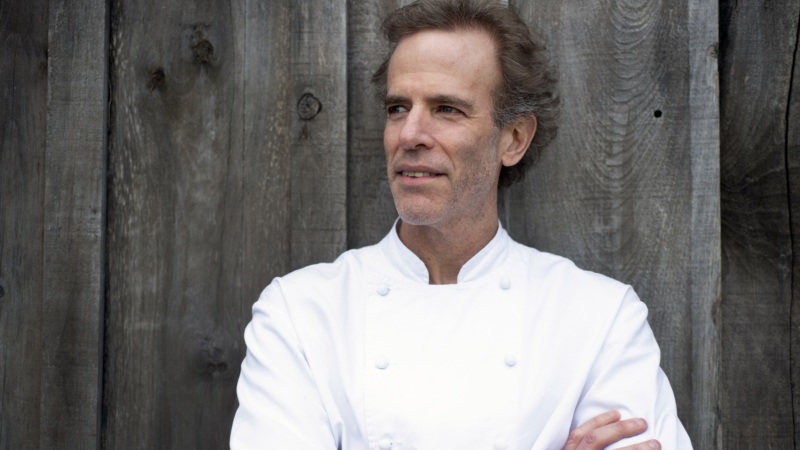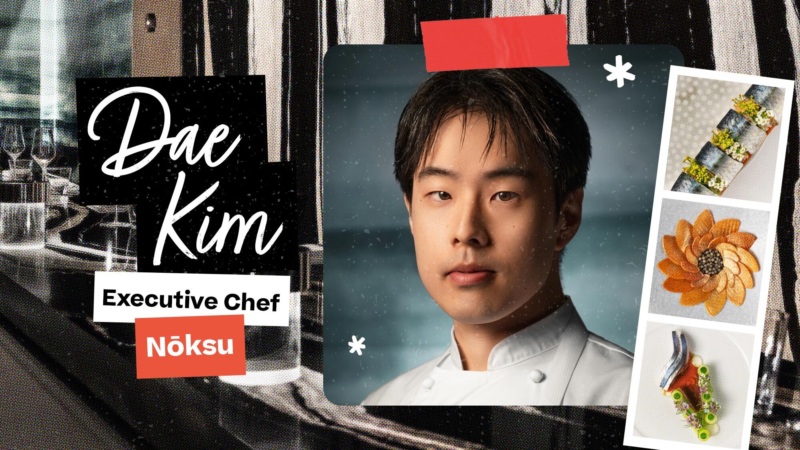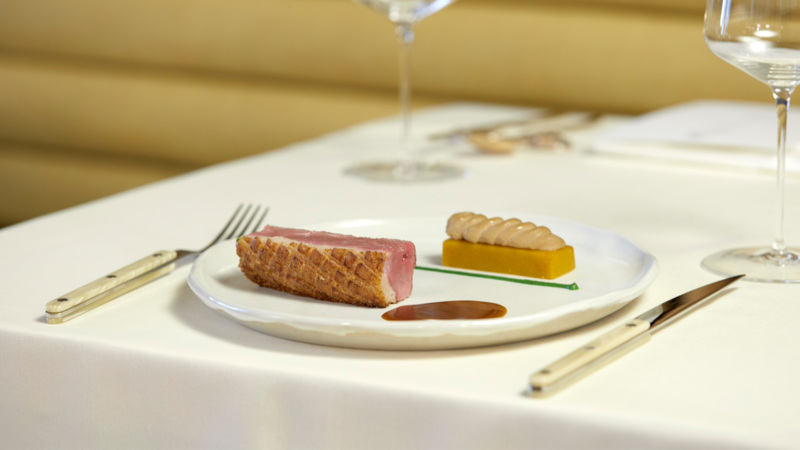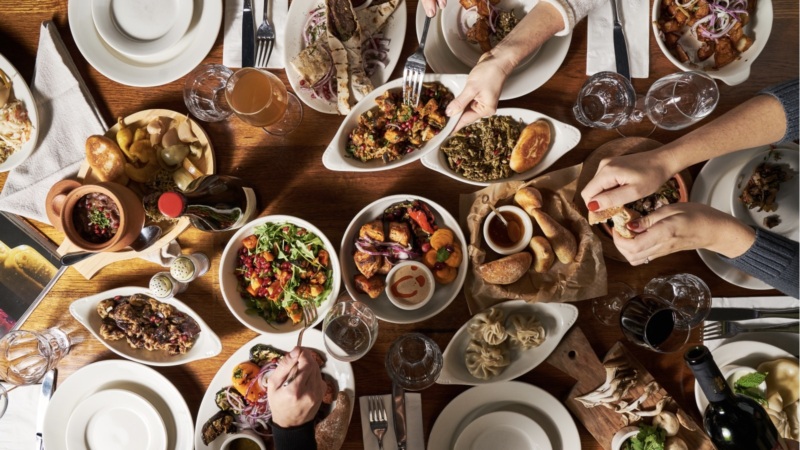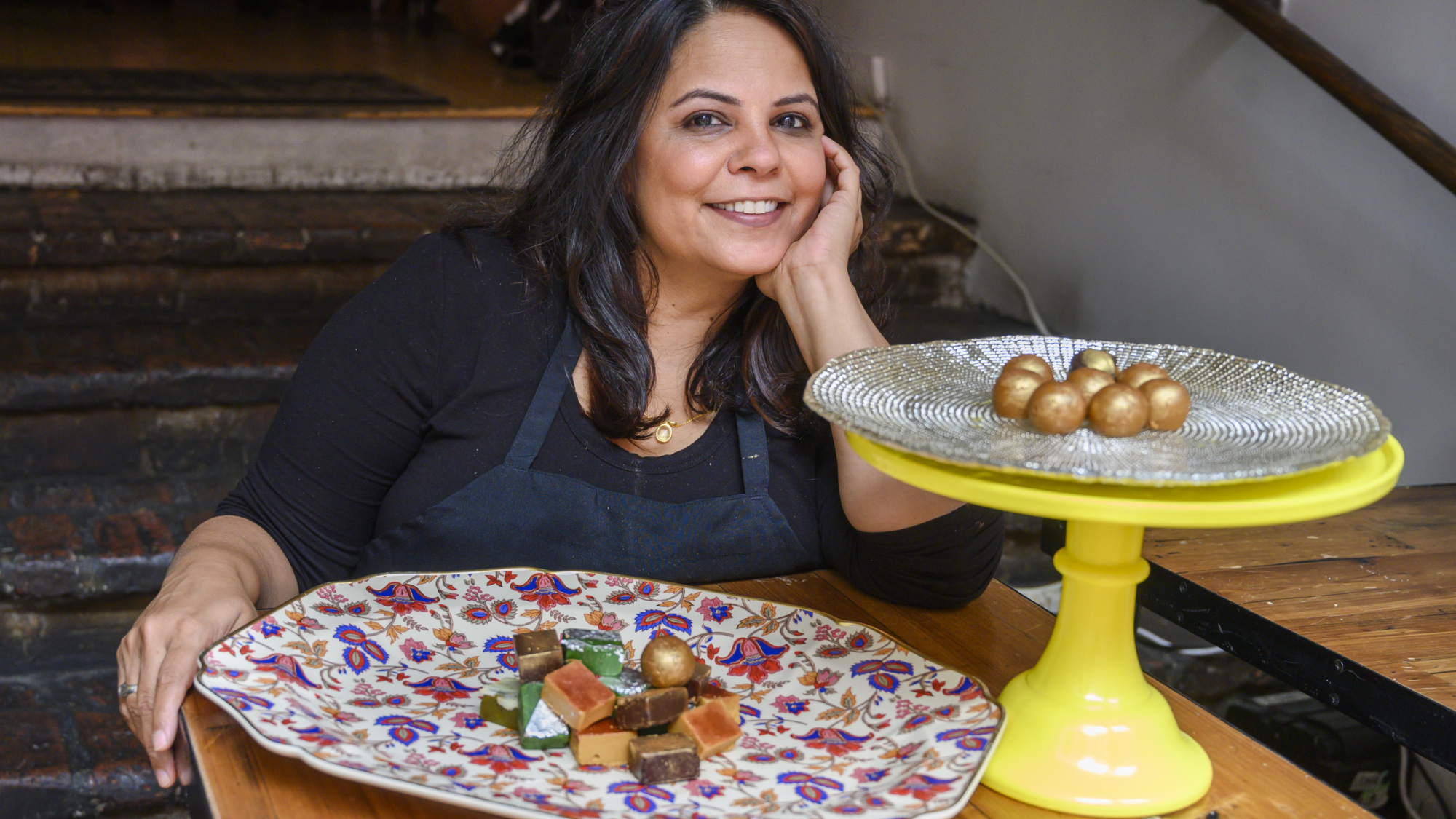
For Tagmo’s Surbhi Sahni, Queerness Is True Hospitality
[Editor’s Note: Tagmo closed at the end of 2023, but you can still order their sweets online.]
Chef Surbhi Sahni radiates warmth as she emerges from the kitchen and flits through the dining room at Tagmo, the restaurant she opened in New York’s Seaport District in the fall of 2021. Her energy matches the restaurant’s striking decor: gold fringes dangling from emerald lampshades, booths dotted with electric greens, pinks, and navy, and a bold tigress mural — a nod to the restaurant’s name, Tagmo, which means tigress in Bhutanese. The tigress is a fitting symbol for Sahni, who fiercely aims to create an inclusive, educational, and queer experience for anyone who walks through Tagmo’s doors.
Sahni, a queer South Asian woman who came out later in life, strives to be inclusive in everything she does inside and outside of the kitchen. That includes challenging perceptions of “authentic” Indian cuisine by centering homestyle regional cooking of all kinds.
Tagmo first began as an online mithai, or sweets, store in 2019, combining ingredients from the diaspora to create bite-sized petit fours that change seasonally. In June, for example, a special Pride collection features blueberry lemon curd burfi and rose-coconut burfi, among others. It has since expanded to a brick-and-mortar restaurant that includes regional dishes from throughout India, like khatta meetha chaat, an aromatic salad from Delhi made with jicama, cucumbers, and chickpeas; gushtaba, a Kashmiri-style lamb meatballs; and meen varuval, a Tamil rice-crusted fried flounder with red chiles and coconut chutney.
“I’m hoping people feel the impact of our flavors,” Sahni says. “We put the restaurant together, in terms of the decor, the menu, how the menu is presented, etc. as a conversation piece. I’m hoping people take that conversation back home. I also hope it inspires other female, queer, or POC shops to do something they’ve always believed in and take that first step.”
We recently sat down with Sahni to talk about community building, the intersection of queerness and food, and challenging traditional notions of authenticity.
Note: This interview has been edited for length and clarity.
- Hillary Sterling on Building a More Inclusive Restaurant Industry for Everyone
- ‘Being a Woman Has Made Me More Innovative’: Alex Raij on the Gender Gap in the Restaurant Industry
- The Freedom of Cooking In America, or, How the Duo at Dhamaka Learned Not to Compromise
- On Being Queer, Arab American, and Speaking Truth Through Food
- For Saigon Social’s Helen Nguyen, Community Is Everything
Resy: How did Tagmo start?
Sahni: I was working part-time at Bittersweet NYC [a sweets company Sahni founded], while I was working at Devi, while I was working at Tulsi [both restaurants have since closed], and while I was supporting my family in Delhi. And I was trying to grow Tagmo. It was hard. I wished I would have done this at 40 [Sahni is now 48]. But the beauty is that I didn’t because I have the experience now that I didn’t have when I was 40. Things happen when they’re supposed to … [it’s that] South Asian philosophy.
How would you describe Tagmo?
We are a South Asian queer- and woman-owned company that does artisanal mithai — just like how your mom made at home (or maybe not). We do regional tweaks that your grandmother made, that your aunt made, and that you would not find anywhere else.
Given your focus on hyperlocal sourcing and home cooking, what was your menu creation process like for Tagmo?
The focus is on homestyle cooking. We want to have a conversation that goes beyond popular dishes. I was really lucky because, when the pandemic hit, I started doing regional Indian cooking and home deliveries throughout New York City, which I always wanted to do. I’m a professional chef, but my roots are cooking at home.
We did 65 weeks of deliveries and never repeated a dish. In some ways, it felt like I was learning a new language. I was researching, calling people up, and having conversations about food. I had free reign for a year-and-a-half to do so many varieties of food.
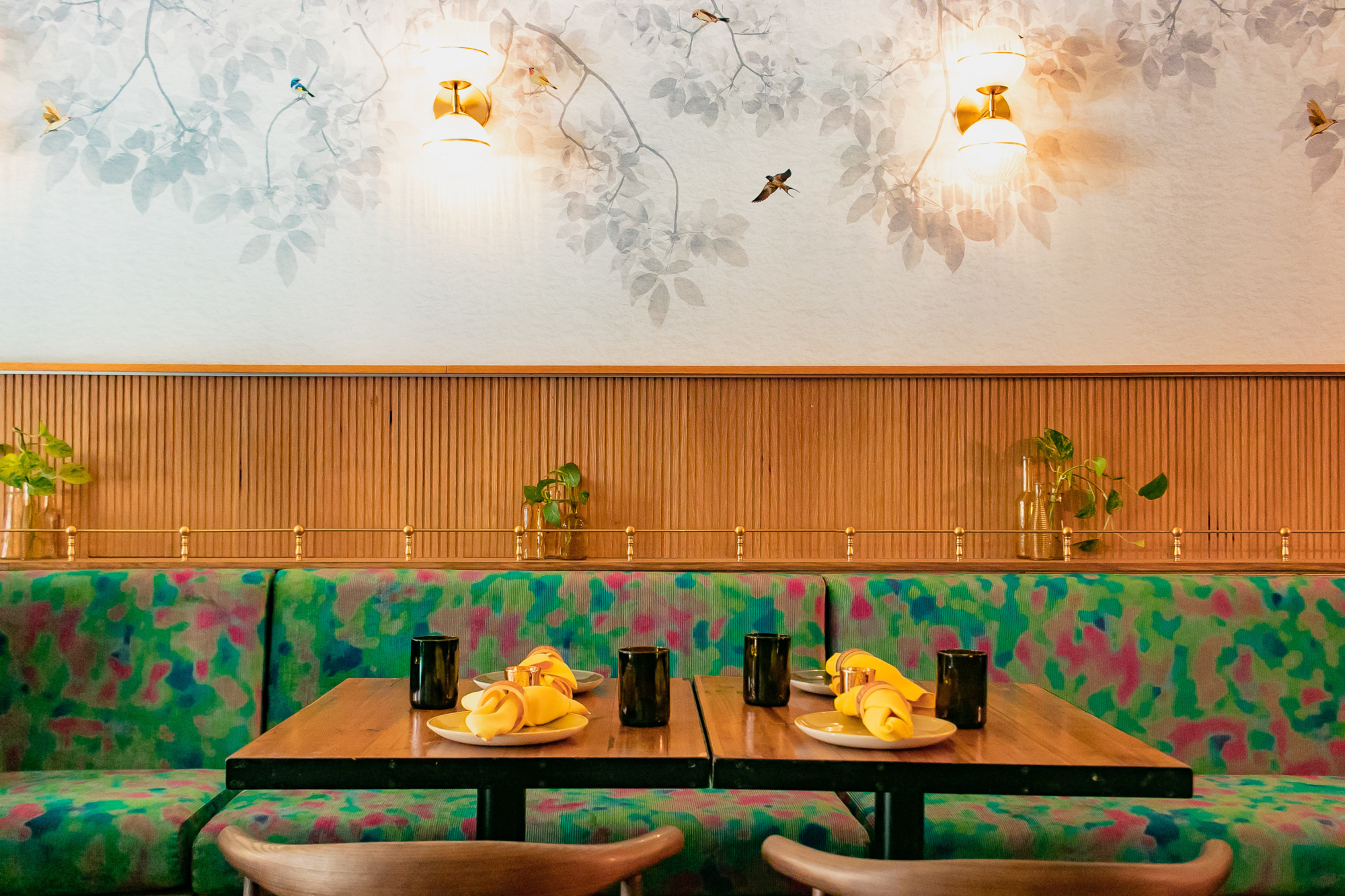
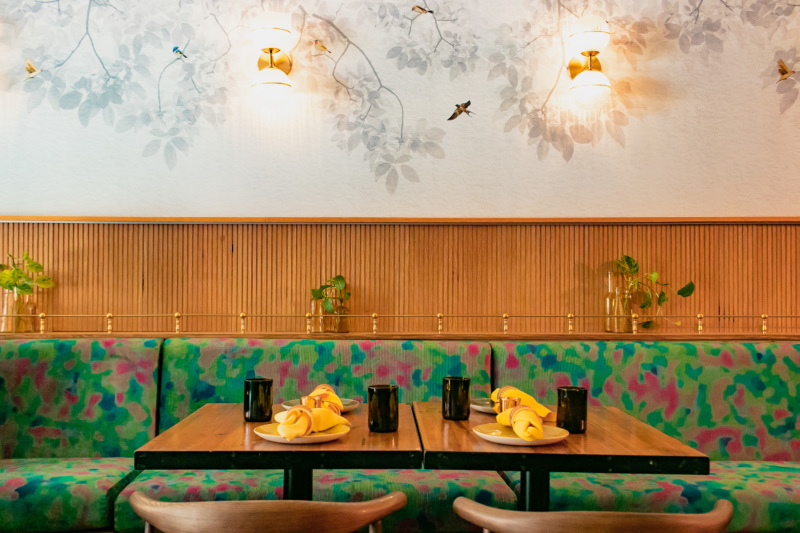
What is a sleeper hit on the menu?
Everything is really good, and it’s all so different. I would say the gushtaba [lamb meatballs simmered in a sauce made with lamb stock, yogurt, green chiles, and caramelized onions] is very unusual as a Kashmiri dish. Sabudana vada [crispy tapioca cakes with potatoes, roasted peanuts, and green chiles served with tamarind and mint yogurt chutneys] is the other one that you never find. A lot of guests come here and say they either have never seen them on any menu in the U.S. or don’t know what they taste like.
What does challenging “authentic” Indian food look like at Tagmo?
Food and culture are always evolving. For example, sandwiches are a big part of my life. They’re certainly not Indian, but for me anything that is a part of my life is Indian. It’s part of my culture. Sandwiches were our breakfast and our lunch — that’s how we grew up. For someone to come and say that is not authentic? I don’t think that makes sense. But then, of course, stereotypical Indian food itself is also authentic. I just prefer to talk about intersectional influences — British influence, Jewish influence, smaller communities. For me, all of that food is also Indian. It’s part of the India I grew up in.
Do you think people are overly critical of authenticity versus what people’s authentic experiences are with food?
Yes, for sure. But I also find people do not give credit to the culture they are borrowing from. If you’re a white person who decides to launch a chai company, I don’t care. But you have to give credit to the communities where you’re borrowing from — that is truly what is important to me. If you have the power to bring a certain kind of food to a wider audience and include the community you’re borrowing from, I think that is great.
Being queer is not just sexuality. For me, it is being inclusive and having a space where anyone and everyone is welcome.
From the 90s onward, how have you seen Indian cooking shift in the U.S.?
In the 90s, we weren’t processing anything, we were just doing it. Some of it was intentional because you wanted to bring your culture to the menu. But now, because of social media, people from different sections of society are having very open conversations — not just with food people or food media, but also with people who are culturally powerful. We are having conversations about how Indian food can be art, how it can be fun, how many complex layers it has. Even though I’ve been cooking since I was eight years old, I haven’t cooked at this level. When you start thinking about all the different regions in India, you can spend a lifetime trying to learn it.
What is the impact of centering homestyle Indian cooking at Tagmo?
I always believed I’d make a place like Tagmo but believing is one thing — it’s not going to just happen on its own. You have to work toward it and keep saying it’ll happen. I did that by creating a community, being vulnerable, and talking to people. You can risk getting hurt when you’re vulnerable, but vulnerability also brings in communities and people who will support you through it.
What are some of the communities that have supported you?
All my women, my queer friends, even guests who walk through the door. Putting my story out into the world was very scary in the beginning because I didn’t know what the reaction was going to be. But it’s worked out well, and I feel grateful.
How have you brought queerness into Tagmo?
It’s part of who I am as a human being, and I bring that to the table. But being queer is not just sexuality. For me, it is being inclusive and having a space where anyone and everyone is welcome. It’s making intentional decisions about who the staff is going to be. It’s respecting and talking about communities that are marginalized and never talked about. It’s having a menu with a regional focus — they all are the unsung heroes. We bring in these dishes that are never focused on. We make clear that home cooks are the center of our conversation.
What has coming to queerness late meant for you?
It has meant that I realized who I am as a person later. Not knowing my queerness affected my confidence for many years. But realizing I was queer – it’s like lightning struck. It all made sense. It has connected me to myself in a way that I hadn’t before – being real, true, and honest. I’m in a space and in a community where I can feel safe about being that person, and I feel very blessed.
You’re really intentional about who is in your kitchen and building a community within Tagmo. I’d love to hear a little bit more about that and how you’ve gone about creating that space.
In 1999, I worked at the Westview at Maurya Sheraton in New Delhi in my first all-women’s kitchen and had a great time. I’m not in touch with most of the women but they’re so close to my heart in a way that nobody else has ever come.
When I opened Tagmo, I made a very intentional decision to create a space for women who generally have not been given the opportunity to cook in a professional kitchen. When we were putting job postings out, we made it clear that we were creating a queer and inclusive space. When a restaurant doesn’t clearly state it, queer folks or women can feel hesitant. I believe that if you keep saying what kind of world you’re hoping to create — both to other people and yourself — then it manifests and changes. It’s slow, but it changes.
What recommendations do you have for someone who wants to create an intergenerational, intercultural staff and kitchen like yours at Tagmo?
You really just have to be open as a person. We are very open in our conversations and decisions when there are menu changes or company decisions. For example, we are launching a new mithai line for Pride. As soon as I started planning for it, I had a conversation with my core group to get their takes on the mithai and that’s how we’ve ended up learning things. It’s not an individual process; it would be exhausting to do everything on my own. My staff are intuitive, creative, interesting people. As a leader, it’s important for me to see their strengths and bring them to the team so that they also know they’re working toward Tagmo’s future.
What kind of future do you want?
I want us to be the company that brings mithai mainstream and truly makes it a conversation piece. It should be in as many places as possible. And if it’s not, people should be seeking it. I want to bring India into focus and talk about how incredible our food products are.
If you could whisper through the walls at your 20-years-younger self, what would you say?
I’d probably say, “You got this.”
Tagmo is open Tuesdays and Wednesdays from 5 to 10 p.m. and Thursdays through Sundays from noon to 3 p.m. and from 5 to 10 p.m.
This article was written by Queer Food Foundation board members Radhika Sharma and Amanda Celestino. The Queer Food Foundation is a collective of queer individuals who work at all intersections of the food system — from food justice, culinary to community organizing, media, hospitality, and more. The foundation is passionate about holding space for the queer community in food and aims to share their skills, knowledge, and experiences to create a thriving, represented and intersectional food system. Follow the Queer Food Foundation on Instagram. Follow Resy, too.



